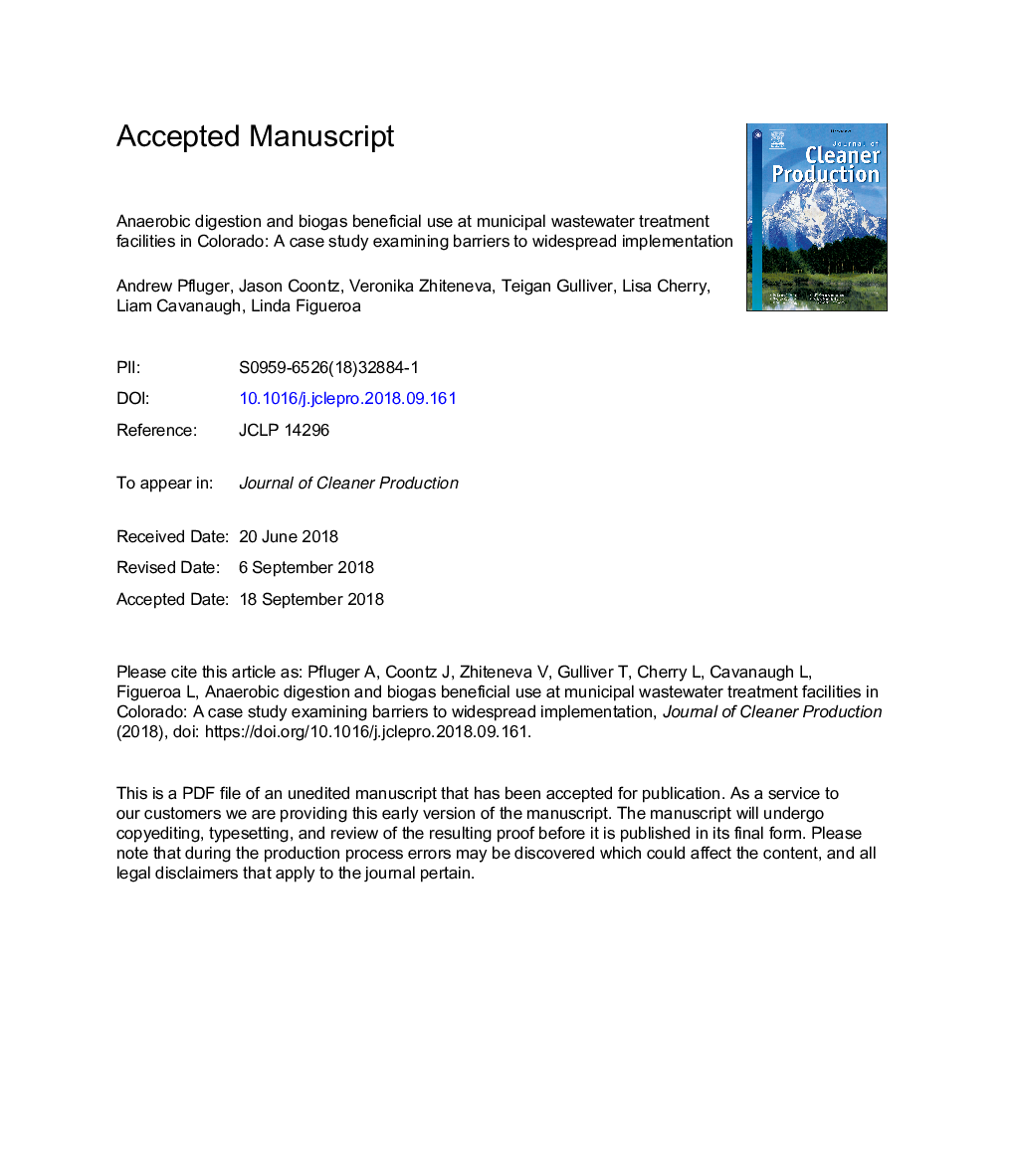| کد مقاله | کد نشریه | سال انتشار | مقاله انگلیسی | نسخه تمام متن |
|---|---|---|---|---|
| 11019720 | 1717621 | 2019 | 37 صفحه PDF | دانلود رایگان |
عنوان انگلیسی مقاله ISI
Anaerobic digestion and biogas beneficial use at municipal wastewater treatment facilities in Colorado: A case study examining barriers to widespread implementation
ترجمه فارسی عنوان
هضم بی هوازی و استفاده بیولوژیکی در تاسیسات تصفیه خانه های شهری کلرادو: مطالعه موردی برای بررسی موانع اجرای گسترده
دانلود مقاله + سفارش ترجمه
دانلود مقاله ISI انگلیسی
رایگان برای ایرانیان
کلمات کلیدی
فاضلاب خانگی، هضم بی هوازی بیوگاز، ترکیب گرما و قدرت، موانع، انرژی پایدار،
موضوعات مرتبط
مهندسی و علوم پایه
مهندسی انرژی
انرژی های تجدید پذیر، توسعه پایدار و محیط زیست
چکیده انگلیسی
In 2004 the state of Colorado became the first state in the U.S. to implement a renewable energy standard. Electrical utilities have met the state's energy goals using a combination of wind, hydroelectric, and solar power, while giving relatively little consideration to biogas generated from domestic wastewater treatment (i.e., biomass accounts forâ¯<â¯0.1% of renewable energy used in Colorado). An examination of wastewater treatment facilities designed to treat flowrates >7570 m3d-1 indicates that energy generated from the anaerobic digestion of wastewater sludge and combined heat and power technologies is limited in Colorado. At the time of this study, only 39% of examined facilities used anaerobic digestion and only 4 of 24 anaerobic digestion facilities actively employed combined heat and power. Barriers to widespread implementation of anaerobic digestion and combined heat and power were primarily associated with costs, e.g., infrastructure or equipment capital costs; however, other barriers were identified, including: effectiveness of available grant and loan programs, state-level regulations, electric utility rate structures, the influence of local decision-making authorities, and a reluctance by wastewater treatment facilities to change sludge digestion practices. To overcome these barriers, recommendations for the state of Colorado include: initiate a comprehensive program focused on promoting current incentives, review the efficacy of available incentive programs and make long-term modifications, enact regulatory updates, increase education and outreach, and establish a program to promote co-digestion of wastewater sludge with other organic waste streams. This state-level case study explores a large number of facilities at a granular level, the results of which may be relevant to other states or regions and can provide insight into barriers elsewhere.
ناشر
Database: Elsevier - ScienceDirect (ساینس دایرکت)
Journal: Journal of Cleaner Production - Volume 206, 1 January 2019, Pages 97-107
Journal: Journal of Cleaner Production - Volume 206, 1 January 2019, Pages 97-107
نویسندگان
Andrew Pfluger, Jason Coontz, Veronika Zhiteneva, Teigan Gulliver, Lisa Cherry, Liam Cavanaugh, Linda Figueroa,
